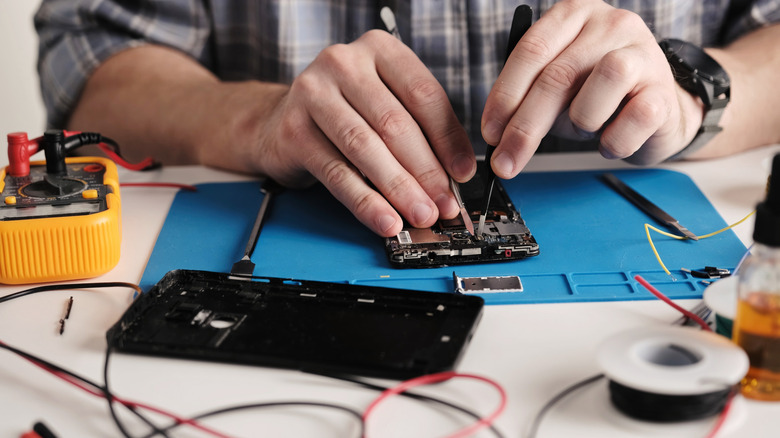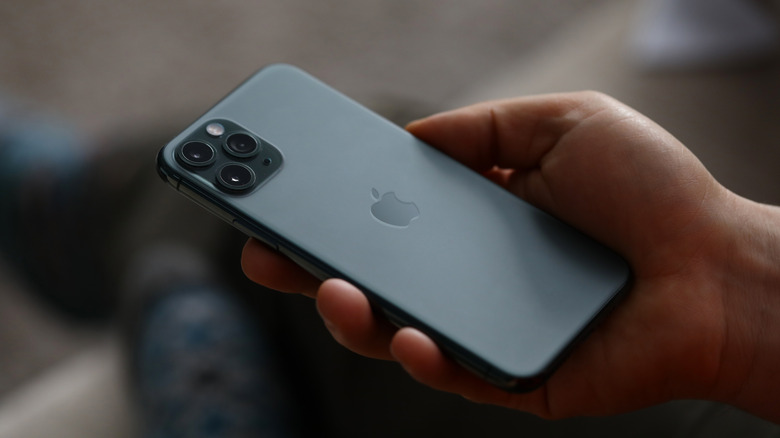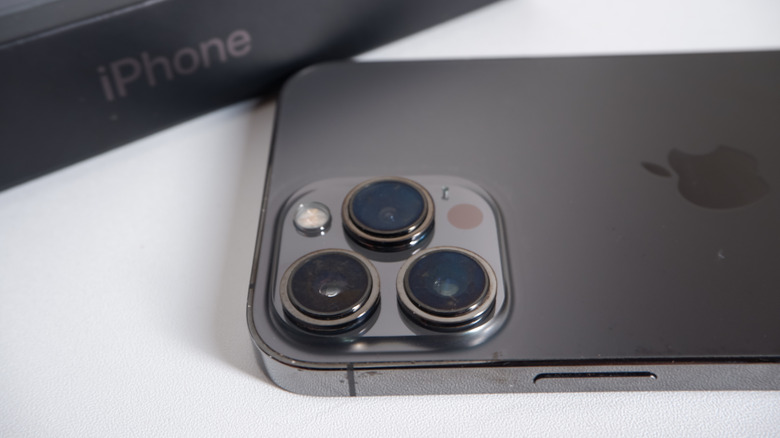Refurbished Phones Have Grades — What's The Difference Between A, B And C?
Shopping for a refurbished smartphone? Pay attention to its grade: It can make or break your purchase. Just like in school, refurbished phones get graded on a scale of A, B, C, and sometimes lower. The letter grade is there to let consumers know exactly what condition a pre-owned phone is in before they buy. What's the overall quality of the device? How does it look? Feel? Function? All of these questions factor into the letter grade the device gets.
Unlike used iPhones that get sold "as-is," refurbished ones are previously owned products that have been returned, repaired, and restored to full working order. The letter grade speaks to this: It comes after rigorous testing during a professional inspection to make sure the phone can perform as it should. Manufacturers and resellers clean or replace any faulty parts, reset the software, and assign a grade based on the phone's condition post-makeover.
An A grade represents the highest quality: It looks good, it works right, and you aren't likely to find many issues with the device (if at all). B grades are just as solid on the inside, but the outside might be a little more questionable. We're not talking shattered screens, of course, but you might see some scratches and scuffs here or there. C grades typically don't have performance issues, either, but their physical look and feel might leave a little something to be desired, like deep scratches or noticeable dents.
How a refurbished grade influences price
There's no standardized grading system that all refurbishers have to follow, but it's assumed that most stick to the same basic principles. Before getting a grade, the device goes through a thorough inspection that looks at functions like the camera quality and battery life. The inspector will also look at its cosmetic condition to see what sort of physical imperfections the device might have. An A, B, C, or lower will ultimately depend on how much value the device has retained after the refurbishing process. Naturally, this grade will also determine what price a buyer should expect to pay.
It's worth repeating that neither A, B, nor C grades will leave you with a bricked phone. Grade A phones are almost indistinguishable from new, while Grade C models show visible wear, but all remain fully functional. A phone would get an A if it were in near-mint condition and showing little to no evidence of prior use. It's like a step below open-box electronics, but a step above used ones. They'll also be the most expensive. A Grade B phone might work just as well as a Grade A model, but may look a little more lived-in. Grade C refurbished phones will be the most affordable and the most visibly worn of the three, but they're still completely safe and fully operational.
Which refurbished grade should you go with?
Buying a refurbished phone is a way to save money, to be sure, but it's just as much a way to help reduce e-waste and the environmental impact of manufacturing new hardware. Every year, millions of smartphones are returned or traded in. Without refurbishment, many of these would be scrapped for parts or sent to landfills. Grading systems make it possible to get some more use out of these devices, restoring them for a new owner instead of turning them into unnecessary waste.
All of this is to say that, whether it be an A, a B, or a C, a refurbished phone isn't going to make you feel like you got scammed. Knowing these grades and understanding what sets each one apart gives you the power to find the right device for your budget and your preferences. If money's tight and you don't mind a couple of dings, you might feel good about buying a C-grade phone. If you simply don't want to pay full price for a new phone but prefer it to look fresh out of the box, you're probably better off with an A-grade.


